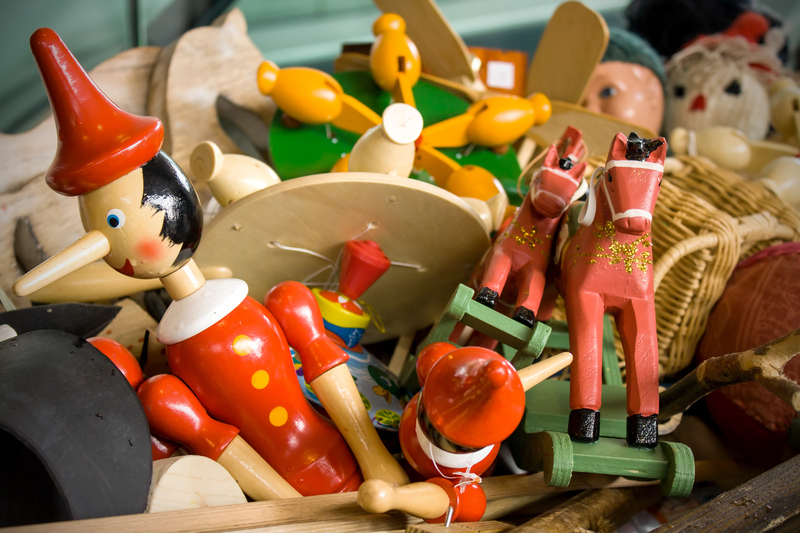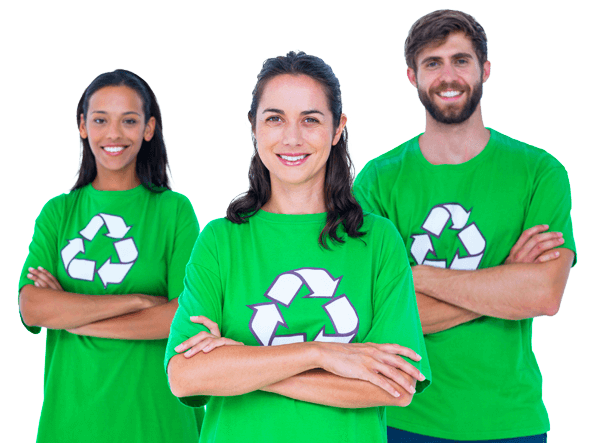Exploring Solutions: Can We Stop Microplastic Pollution
Posted on 24/09/2025
Exploring Solutions: Can We Stop Microplastic Pollution?
Microplastic pollution is emerging as one of the most pressing environmental issues of our time. From the deepest ocean trenches to the highest mountain peaks, these tiny plastic particles have infiltrated almost every corner of the globe. As awareness of the problem spreads, so too does the urgency to find effective solutions. But can we stop microplastic pollution, or is it an insurmountable challenge? This comprehensive article delves into the sources of microplastics, the dangers they pose, and the innovative solutions being developed globally. Join us as we explore whether it's truly possible to curb the tide of microplastic contamination.
What Are Microplastics?
Before we can address the issue of stopping microplastic pollution, it's essential to understand what microplastics are. Microplastics are plastic particles less than 5mm in size. They fall into two categories:
- Primary Microplastics: Manufactured as small particles, such as microbeads in cosmetics or industrial pellets.
- Secondary Microplastics: Result from the breakdown of larger plastic items, such as water bottles, bags, and fishing nets, through exposure to sunlight, wind, and physical abrasion.
Microplastics are alarmingly pervasive, found in our oceans, rivers, soils, and even the air we breathe. Recent studies even show microplastics in human blood and placental tissue, raising new concerns for health and the environment.

Sources of Microplastic Pollution
To devise effective solutions for microplastic pollution prevention, it's crucial to trace their journey from source to the environment. Some of the main sources include:
- Textiles: Synthetic fabrics like polyester and nylon shed microscopic fibers during washing.
- Tires: Every time we drive, tires shed microplastics onto the road, which then wash into waterways.
- Personal Care Products: Face washes and toothpastes often contain microbeads.
- Single-Use Plastics: Bags, bottles, and packaging break down into minute particles over time.
- Industrial Processes: Pellet loss during plastic manufacturing and shipping is a major contributor.
- Paints: Road markings and ship paints contribute particles as they degrade.
The sheer diversity of sources makes tackling microplastic pollution especially challenging. But that doesn't mean we should stop trying.
Why Is Microplastic Pollution So Concerning?
The question "Can we stop microplastic pollution?" is so urgent because microplastics have far-reaching impacts:
- Environmental Damage: Microplastics are ingested by wildlife, causing physical and chemical harm. They can transport invasive species and toxic chemicals into new habitats.
- Human Health Risks: Microplastics have been found in food, water, and even the air. Their long-term effects on human health remain uncertain but could include inflammation, toxicity, and hormonal disruption.
- Economic Costs: Cleanup is expensive, and industries such as fishing and tourism suffer losses from polluted environments.
Global Commitments to Reducing Microplastics
Tackling the problem requires concerted international action. A number of countries and organizations are stepping up:
- Microbead Bans: The UK, US, Canada, and several other countries have banned microbeads in cosmetics.
- Single-Use Plastic Restrictions: The European Union is phasing out many single-use plastics by 2025.
- Global Treaties: The United Nations is working on a binding international treaty to address plastic pollution, including microplastics.
- Extended Producer Responsibility (EPR): Some regions demand manufacturers take more responsibility for their plastic waste.
These steps show that while a total end to microplastic pollution may be ambitious, meaningful reductions are within reach if bold action continues.
Innovative Solutions for Microplastic Mitigation
With the scale of the problem apparent, innovators worldwide are developing creative ways to tackle microplastic pollution at every stage of the lifecycle, from production to disposal.
1. Technology-Driven Filtration
- Washing Machine Filters: Startups and appliance makers are designing filters that capture microfibers from laundry before they reach wastewater.
- Water Treatment Plant Upgrades: Advanced membranes and filtration systems can trap microplastics during sewage treatment.
- Stormwater Management: Innovative grates and traps on city streets intercept particles before they reach rivers and the sea.
2. Alternative Materials and Product Design
- Biodegradable Plastics: New plastics that break down quickly in the environment can help minimize future pollution, if carefully implemented.
- Natural Fibers: Shifting to clothing made from cotton, wool, or bamboo reduces microfiber shedding.
- Redesigned Tires: Some tire companies are engineering tires that emit fewer microplastics during use.
3. Clean-Up and Remediation
- Ocean Skimmers: Organizations like The Ocean Cleanup are deploying large-scale devices to remove floating plastics, though filtering out microplastics remains challenging.
- Innovative Adsorbents: New magnetic or sponge-like materials can capture microplastics from water sources.
- Beach Clean-Ups: Grassroots efforts continue to remove plastics before breakdown can occur.
4. Policy and Regulation
- Mandatory Filtration: Regulations could require all new washing machines to include microfiber filters, as being discussed in countries such as France.
- Labeling Requirements: Improved labeling for plastics and clothing would let consumers make more informed choices.
- Bans and Taxes: Extending bans on microplastics in products, and imposing taxes on polluting goods, incentivizes companies to redesign products and supply chains.
5. Consumer Awareness and Behavior Change
- Conscious Consumption: Reducing reliance on disposable plastics and fast fashion decreases demand for polluting products.
- Proper Waste Disposal: Increased recycling and composting help keep plastics out of the environment.
- Support for Eco-Innovations: Choosing products from companies investing in sustainable alternatives encourages industry-wide shifts.
Scientific Research: Monitoring and Understanding Microplastic Pollution
As we explore whether we can stop microplastic pollution, it's clear that more research is vital. Scientists worldwide are deploying new techniques to analyze the spread, impacts, and fate of microplastics in the environment.
- Detection Techniques: Spectroscopy, mass spectrometry, and microscopy are advancing rapidly, improving our understanding of how microplastics move through ecosystems and food chains.
- Long-Term Health Studies: Universities and health agencies are investigating the impact of chronic microplastic exposure on human health.
- Ecological Impact Studies: Researchers investigate how microplastics alter animal behavior, plant growth, and overall biodiversity.
- Source Tracking: Sophisticated models help identify key sources and "hotspots" requiring urgent action.
Collaboration Across Sectors
*Multidisciplinary cooperation between scientists, policymakers, industry, and the public* is essential for effective solutions. Transparency and open data sharing also empower communities to advocate for local change.
Barriers to Stopping Microplastic Pollution
Despite these innovations, several barriers make eliminating microplastic pollution extremely challenging:
- Scale and Persistence: Millions of tons of microplastics are already in circulation, and plastics do not easily degrade.
- Economic Interests: The global plastics industry is worth hundreds of billions of dollars, making rapid transitions difficult.
- Enforcement Gaps: Even where laws exist, monitoring and enforcing microplastic regulations can be inconsistent.
- Consumer Habits: Convenience and low cost still push many toward plastic-heavy lifestyles.
- Incomplete Knowledge: Many routes by which microplastics travel and affect organisms are still poorly understood.
These challenges require not just technological innovation but also *societal transformation* on a global scale.
Can We Realistically Stop Microplastic Pollution?
The core question remains: Is it possible to fully eliminate microplastic pollution, or must we focus on minimizing and managing its impacts?
Many experts believe that a total end to microplastic pollution may be unrealistic in the near future, especially considering plastics already in the environment will continue to break down for decades or centuries. However, significant reductions are achievable through a mix of regulation, innovation, and behavior change.
- Minimization: By reducing the production of unnecessary plastics and capturing microplastics before they escape, we can slow down contamination dramatically.
- Mitigation: Ongoing cleanup efforts, combined with natural and engineered filtering systems, help remove existing particles.
- Prevention: The most sustainable approach is stopping microplastics at the source through redesign, bans, and conscious consumer choices.
Stopping microplastic pollution will not be easy. It will demand international cooperation, substantial investment, innovation, and - above all - a commitment by individuals, corporations, and governments alike to safeguard the planet's future.

How You Can Make a Difference
While systemic change is vital, individual actions matter in the fight against microplastic pollution. Here's how you can contribute:
- Choose Natural Fibers: Opt for clothing made from cotton, wool, or other plant-based materials instead of synthetics.
- Use a Guppyfriend Bag or Filters: These products catch microfibers during laundry.
- Reduce Single-Use Plastics: Carry reusable bags, bottles, and straws.
- Properly Dispose of Waste: Recycle plastics whenever possible and avoid littering.
- Support Legislation: Advocate for local and national policies aimed at reducing microplastics.
- Educate Others: Share knowledge within your community to inspire collective action.
Conclusion: Toward a Clean Future
Exploring solutions to microplastic pollution reveals that while a complete halt may be difficult, substantial progress is within reach. By combining policy, innovation, science, and individual commitment, we can reduce microplastic pollution and protect global ecosystems for generations to come.
Every action counts in this shared endeavor. Whether you are a policymaker, an industry leader, or an everyday citizen, you play a role in stopping the spread of microplastics. Let's act now for a healthier, cleaner planet--because the solution to microplastic pollution starts with all of us.
```
 020 3875 4152
020 3875 4152 020 3875 4152
020 3875 4152




 House clearance
House clearance WASTE REMOVAL
WASTE REMOVAL





